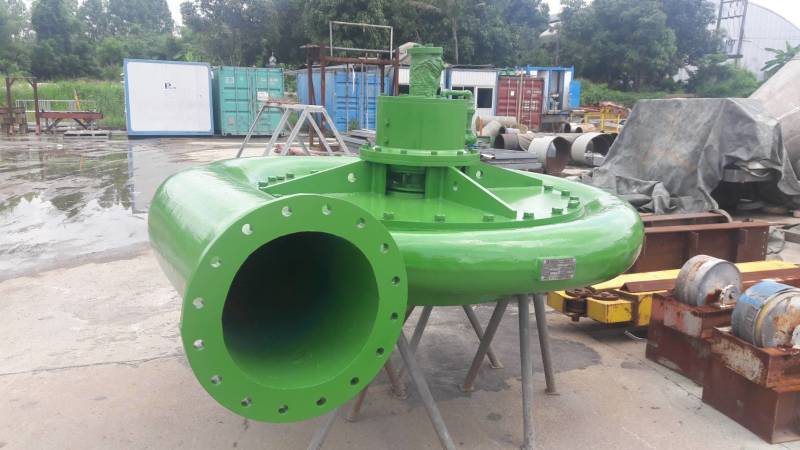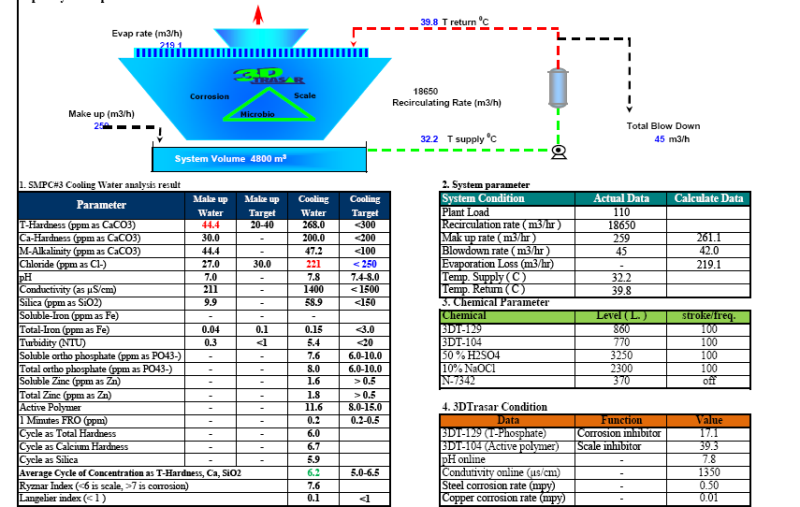Navigation
Install the app
How to install the app on iOS
Follow along with the video below to see how to install our site as a web app on your home screen.
Note: This feature may not be available in some browsers.
More options
You are using an out of date browser. It may not display this or other websites correctly.
You should upgrade or use an alternative browser.
You should upgrade or use an alternative browser.
How calculate corrosion allowance of HYDRAULIC TURBINE
- Thread starter UDDBOY
- Start date
- Status
- Not open for further replies.
Could you provide some additional information regarding the water? A good start would be water type. (River water, cooling water, steam condensate, sour water etc.) Type will dictate further questions but try and provide background information regarding the variables that affect corrosion in your system (presence of oxygen, velocity, pH, inhibitor, temperatures, chemical treatment, etc.)
hi
even knowing pH, oxygen, water origin, etc., you will have difficulties in calculating any corrosion rate and also in concluding that cast iron is OK for the service in absence of coating...
In my opinion, only the coating provides the resistance, I would go for usual 3mm corrosion allowance in addition to the existant coating material, but whatever corrosion allowance is, it will probably not sustain the conditions without the coating.
once the coating is off, you may probably experience severe corrosion of the cast iron by water with unknown characteristics.
even knowing pH, oxygen, water origin, etc., you will have difficulties in calculating any corrosion rate and also in concluding that cast iron is OK for the service in absence of coating...
In my opinion, only the coating provides the resistance, I would go for usual 3mm corrosion allowance in addition to the existant coating material, but whatever corrosion allowance is, it will probably not sustain the conditions without the coating.
once the coating is off, you may probably experience severe corrosion of the cast iron by water with unknown characteristics.
- Thread starter
- #5
- Thread starter
- #6
Dhurjati Sen
Materials
The parameters seem quite okay. Deposition (mainly silica) seems to be more of a problem than corrosion. The corrosion and scale inhibitors should work fine. You may add some biocide in the system.
Guest
With hydro turbines it is really hard to predict wear rates, especially in high head situations (is this a pelton wheel?)
Sand is your worst enemy; chlorides not necessarily so much if temperatures are low. But it's a function of the overall fluid makeup and operating conditions. Wear in hydro turbines (and pumps) will be highly localized, so a stock corrosion allowance is not really a useful approach.
Run it and see is the best answer I can give; predicting is a mug's game. Past performance in the same environment (if there is any data) is your best guide.
Personally I would not use cast iron for anything at all critical (and I've built a fair few hydro turbines). I also learned from designers that cavitation (the classic wear mode in turbines) is best combatted by design rather than by barriers. Obviously abrasive environments are another matter altogether. Coatings won't buy you any wear protection.
"Everyone is entitled to their own opinions, but they are not entitled to their own facts."
Sand is your worst enemy; chlorides not necessarily so much if temperatures are low. But it's a function of the overall fluid makeup and operating conditions. Wear in hydro turbines (and pumps) will be highly localized, so a stock corrosion allowance is not really a useful approach.
Run it and see is the best answer I can give; predicting is a mug's game. Past performance in the same environment (if there is any data) is your best guide.
Personally I would not use cast iron for anything at all critical (and I've built a fair few hydro turbines). I also learned from designers that cavitation (the classic wear mode in turbines) is best combatted by design rather than by barriers. Obviously abrasive environments are another matter altogether. Coatings won't buy you any wear protection.
"Everyone is entitled to their own opinions, but they are not entitled to their own facts."
pradipgoswami
Materials
Tons of Hydro runners are in Ontario, many are made of primitive and obsolete materials. For turbine runners it's very difficult to provided corrosion allowance, as the corrosion and metal loss is very localized. Cavitation is the major damage. This is mitigated by 309/309L overlays on cast steel runners. Latest Martensitic stainless steel runners are overlaid with anti cavitation overlay on the suction side of the blades. General rule of thumb life for these martensitic stainless runners could be [highlight #F57900]30+ years.[/highlight]
For cast iron runners, the best option would be to protect the suction side with epoxy based anti cavitation paint or protective coating, though they're hard to apply when the runners are salvaged during the outage.
Pradip Goswami,P.Eng.IWE
Welding & Metallurgical Specialist
Ontario,Canada.
ca.linkedin.com/pub/pradip-goswami/5/985/299
For cast iron runners, the best option would be to protect the suction side with epoxy based anti cavitation paint or protective coating, though they're hard to apply when the runners are salvaged during the outage.
Pradip Goswami,P.Eng.IWE
Welding & Metallurgical Specialist
Ontario,Canada.
ca.linkedin.com/pub/pradip-goswami/5/985/299
Guest
Padrip,
Stainless steel overlay on cast steel runners is a widely used approach, but 309/L is inferior to a single layer only of 308/L with no butter later. This was learned by trial and error and by cavitation testing. The micromechanism for cavitation resistance, strain-induced martensite transformation (which happens in service) was discovered later by Fihey et al at IREQ in Québec and led to the development of a commercial product marketed by Stoody. This welding alloy is similar to stainless steel, but substitutes cobalt for most of the nickel.
"Everyone is entitled to their own opinions, but they are not entitled to their own facts."
Stainless steel overlay on cast steel runners is a widely used approach, but 309/L is inferior to a single layer only of 308/L with no butter later. This was learned by trial and error and by cavitation testing. The micromechanism for cavitation resistance, strain-induced martensite transformation (which happens in service) was discovered later by Fihey et al at IREQ in Québec and led to the development of a commercial product marketed by Stoody. This welding alloy is similar to stainless steel, but substitutes cobalt for most of the nickel.
"Everyone is entitled to their own opinions, but they are not entitled to their own facts."
pradipgoswami
Materials
Hi Ironic Metallurgist,
I'm very well aware of this anti cavitation alloys(including manufacturer's brands) which are applied for hydro turbines, as well as the problems associated with it. In fact had dealt with quite a few runners involving such anti cavitation alloys in the past.
Thanks.
Pradip Goswami,P.Eng.IWE
Welding & Metallurgical Specialist
Ontario,Canada.
ca.linkedin.com/pub/pradip-goswami/5/985/299
I'm very well aware of this anti cavitation alloys(including manufacturer's brands) which are applied for hydro turbines, as well as the problems associated with it. In fact had dealt with quite a few runners involving such anti cavitation alloys in the past.
Thanks.
Pradip Goswami,P.Eng.IWE
Welding & Metallurgical Specialist
Ontario,Canada.
ca.linkedin.com/pub/pradip-goswami/5/985/299
- Status
- Not open for further replies.
Similar threads
- Locked
- Question
- Replies
- 6
- Views
- 7
- Replies
- 4
- Views
- 8
- Replies
- 5
- Views
- 15
- Question
- Replies
- 0
- Views
- 10
- Replies
- 2
- Views
- 6


